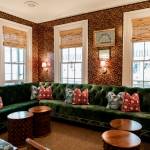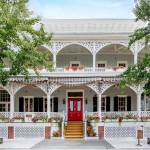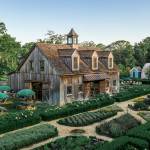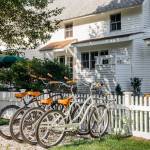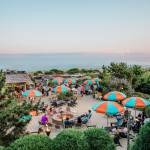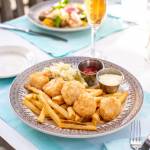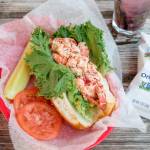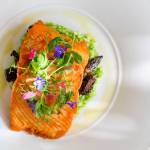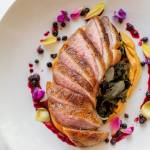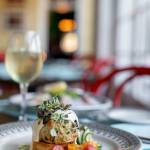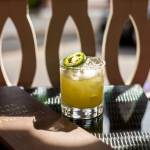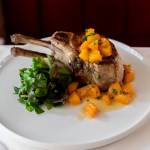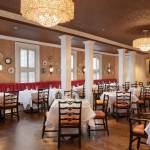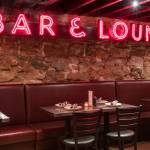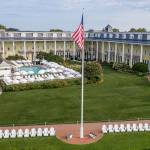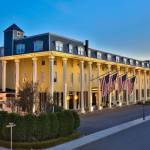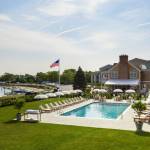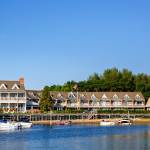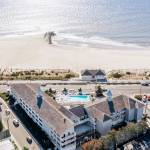New Jersey’s Cape May extends like an oversize comma from the underside of the Garden State. It stretches 20 miles from the quaint town of Swainton south to tiny and tony Cape May Point, a beachside community of 19th century mansions that, a century ago, provided a convenient waypoint for the illegal importation of alcohol thanks to its extensive coastline and quick, backwoods access through swamps and the Pine Barrens to thirsty Philadelphia and Atlantic City. (In the words of one historian, Cape May Point was a “smuggler’s paradise” not only in the 1920s but for centuries prior due to its remoteness.)
A hundred years removed from bootlegging, Cape May Point is attracting clientele of an entirely different sort. Grand homes and properties in architectural styles range from Queen Anne to Colonial Revival sit in a municipality less than a mile square and a year-round population of barely 200. But the hotels! Congress Hall alone has hosted five presidents, with Benjamin Harrison dubbing the inn as his “Summer White House.”
Congress Hall is also where weary travelers must come to retrieve keys to sister property, The Virginia, up the street. Stepping into the Congress Hall’s lobby, one gets the feel of early-20th century elegance thanks to its plush furnishings. Dials above the twin elevators moved across the floor numbers as the cabins moved up and down. Heightening this throwback was that our room key for The Virginia was an old-school metallic behemoth.
Leaving our car at the Congress Hall’s valet, we walked a few short blocks to The Virginia, a building restored in 1879 following disastrous fires that had wracked this community the year prior. Like Congress Hall, the former Ebbitt House was a favorite of visitors from the proximal South, and thus got its new name in the 1890s, quickly becoming a favorite for social elites from across the New York-to-DC corridor.
We had a bit of a struggle trying the oversize room key after too many years of using keycards and digital keys. The room was spacious with an enormous bed (filled with more than enough pillows), two comfortable lounge chairs and a side table complete with a coffee maker.
Adding to the luxe atmosphere was a shower featuring not one, not two, but three shower heads—called a “spa shower” in hospitality parlance—ideal for washing off sand from the beaches or the sweat of a hot summer day’s walk.
As Cape May is surrounded by saltwater, the town’s restaurants were awash in fresh seafood. But what of land-based produce? Fortunately, for guests of The Virginia, the Beach Plum Farm was only two miles away… a 62-acre business whose orchards supply fruits, vegetables, poultry and ham to Cape May Point’s hotels. General Manager Christina Albert met us in front of the farm’s shop, busy troweling dirt in the garden. She smiled and apologized for the earth on her palms, but the work of a small business like this never ends.
Christina walked us to the nearby chicken coops and pigpens. The animals had ample room to roam and root in the ground, and the birds even strolled among the outdoor picnic tables as guests enjoyed fresh eggs.
In the farm’s market, in addition to fresh eggs, salads, juices and potatoes, we browsed artworks by local producers and kitchen tools made not far away. It’s the very definition of farm-to-table: When you dine in Cape May, you know where your food comes from, and how it’s prepared. Dining is a big part of the experience.
Cape May’s beaches are perfect for a stroll, whether or not the waters are warm enough for a dip (which typically isn’t until July), and so after the farm, we drove over to Sunset Beach to see the wreckage of the SS Atlantus. It is a concrete vessel commissioned during the First World War that never saw action, although she did ferry GIs home from Europe at the conflict’s conclusion. The Atlantus was brought to Cape May in 1926 by the rather eccentric Colonel Jesse Ronsenfeld, who reimagined the vessel as a ferry landing. A summer storm that year released the Atlantus from her moorings and she ran aground, damaged and unsalvageable—but a sight to behold from the shore even today.
For an even better view, the apex of the nearby Cape May Point lighthouse offered a panoramic vista at the exact spot where the waters of Delaware Bay and the Atlantic Ocean meet. We could also behold the remains of a beachfront fortress from the Second World War, built as a bulwark against Nazi U-boats should they have ventured close to these shores.
The central commercial district of Cape May offered art galleries and tschocke shops galore, largely of a nautical theme. We were intent on finding something for the walls of our home in the DC suburbs, so we were thrilled when we entered a gallery where images of crashing waves, boats and lighthouses shone forth in all styles. We selected such a canvas for our home, and celebrated with ice cream and salt water taffy (incomparable treat of the Jersey Shore).
As it was cocktail hour, we headed back to The Virginia to recline in plush chairs on the hotel’s patio, where we enjoyed deviled eggs from the kitchen and a “side” of a blue cheese vodka martini and a negroni gin cocktail. The Virginia’s mixology was top-notch, and no sooner had the olives from my martini vanished, a replacement glass was set before me by the hotel’s attentive staff. We toasted our good fortune.
Then it was indoors to The Ebbitt Room, named for the hotel’s Victorian-era owners, Alfred and Ellen Ebbitt, whose portraits peer out at diners from the restaurant’s wall. White tablecloths and red banquettes shared the space with an oak bar stocked with top-shelf liquor. We started off with the char-grilled oysters, served in chili-herb butter, pecorino cheese and za’atar bread crumbs. It didn’t disappoint, and it was the perfect launching point into a subsequent course of seared Delaware Bay scallops, served with artichokes, sugar snaps, peas and carrots—all grown at Beach Plum Farm just down the road. We also savored the dry-aged duck, which was garnished with sweet potato puree, Tuscan kale and huckleberry jus—also, from the farm.
This meal showcased the uniqueness of Cape May Point, with seafood sourced in the waters and married with produce grown nearby—and all served in a hotel from the Victorian era. But The Virginia also pays tribute to more recent history, as a Mets fan with some extra cash to burn bought two seats from the old Shea Stadium and placed them on the sidewalk just outside of the hotel. (Might it someday be 1986 all over again?)
You can peer toward the water from those blue seats, and envision 19th century vessels headed here from overseas. Or World War I warships coming here to be transformed for commerce. Or even the ghosts of bootleggers from that century-old experiment that went so (rightfully) wrong.
It was as great a place as any to be pampered while feeling connected to some rather unique history.


